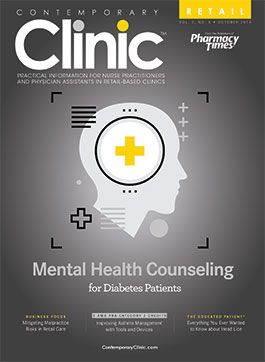Be a Key Player on the Diabetes Care Team
The increasing incidence of diabetes is outpacing the number of health care providers skilled in caring for affected patients.
The increasing incidence of diabetes is outpacing the number of health care providers skilled in caring for affected patients. According to the CDC, an estimated 29.1 million individuals have diabetes in the United States, and another 86 million adults have prediabetes. If the trends continue, as many as 1 in 3 US adults could have diabetes within about 30 years.1,2
The good news is that nurse practitioners (NPs) and physician assistants (PAs) are well positioned for the challenging and satisfying work required to control our national diabetes crisis. According to the results of a study reported inHealth Affairs, “Inclusion of physician assistants/nurse practitioners in a variety of roles on primary care teams within a single organization resulted in encouraging outcomes more often than not.”3In addition, “Older patients with diabetes on panels with physician assistant/nurse practitioners in any role did the same or better for most outcomes than those with physician-only care.” For another example of how NPs are making a difference, see “Nurse Practitioners Prevent Hospital Admissions Among Diabetics” at contemporaryclinic.com.
It’s good to have supportive data, but I’m sure you don’t need studies to tell you that you’re making a difference in the health of your patients with diabetes. You see positive outcomes all the time by educating and treating these patients and communicating with their other health care providers.
To continue to be an influential player on the health care team, exercise your freedom to learn new skills and obtain continuing education, especially in regard to managing diabetes. To assist NPs and PAs in becoming go-to patient educators, we offer this Diabetes issue with articles on hypo- and hyperglycemia, mental health counseling, peripheral neuropathy, and foot exams. In addition, go to contemporaryclinic.com and search for “diabetes.” For continuing education, click the dropdown menu on the top navigation bar.
Contemporary ClinicTMis here to be your best resource for practical clinical information. Ultimately, it’s all about preparing to provide your patients with optimal care. And you might be surprised by how many of them notice your extra effort and express their appreciation.
Autumn is the perfect time for recognizing your contributions. National PA Week was October 6 through 12, and National NP Week will be held November 13 through 19. So, please joinContemporary ClinicTMand your peers in celebrating dedicated retail clinic staff at #ThankaPA and #NPWeek. We appreciate and value your work in preventing and treating diseases such as diabetes and setting our nation on a path toward better health.
Thank you for reading!
Mike Hennessy, Sr
Chairman and CEO
References
- Diabetes. CDC website. cdc.gov/chronicdisease/resources/publications/aag/diabetes.htm. Accessed September 8, 2016.
- Preidt R. Shortage of doctors who treat diabetes looming. US News website. health.usnews.com/health-news/articles/2014/06/20/shortage-of-doctors-who-treat-diabetes-looming. Published June 20, 2014. Accessed September 8, 2016.
- Everett CM, Thorpe CT, Palta M, Carayon P, Bartels C, Smith MA. Physician assistants and nurse practitioners perform effective roles on teams caring for Medicare patients with diabetes. Health Aff (Millwood). 2013;32(11):1942-1948. doi: 10.1377/hlthaff.2013.0506.

Knock Out Aches and Pains From Cold
October 30th 2019The symptoms associated with colds, most commonly congestion, coughing, sneezing, and sore throats, are the body's response when a virus exerts its effects on the immune system. Cold symptoms peak at about 1 to 2 days and last 7 to 10 days but can last up to 3 weeks.
COPD: Should a Clinician Treat or Refer?
October 27th 2019The Global Initiative for Chronic Obstructive Lung Disease (GOLD) defines the condition as follows: “COPD is a common, preventable, and treatable disease that is characterized by persistent respiratory symptoms and airflow limitation that is due to airway and/or alveolar abnormalities usually caused by significant exposure to noxious particles or gases.â€
Diabetic Ketoacidosis Is Preventable With Proper Treatment
October 24th 2019Cancer, diabetes, and heart disease account for a large portion of the $3.3 trillion annual US health care expenditures. In fact, 90% of these expenditures are due to chronic conditions. About 23 million people in the United States have diabetes, 7 million have undiagnosed diabetes, and 83 million have prediabetes.
What Are the Latest Influenza Vaccine Recommendations?
October 21st 2019Clinicians should recommend routine yearly influenza vaccinations for everyone 6 months or older who has no contraindications for the 2019-2020 influenza season starting at the end of October, according to the Advisory Committee on Immunization Practices.
What Is the Best Way to Treat Pharyngitis?
October 18th 2019There are many different causes of throat discomfort, but patients commonly associate a sore throat with an infection and may think that they need antibiotics. This unfortunately leads to unnecessary antibiotic prescribing when clinicians do not apply evidence-based practice.
